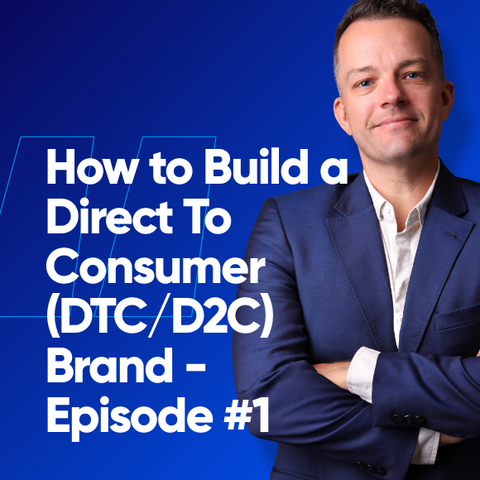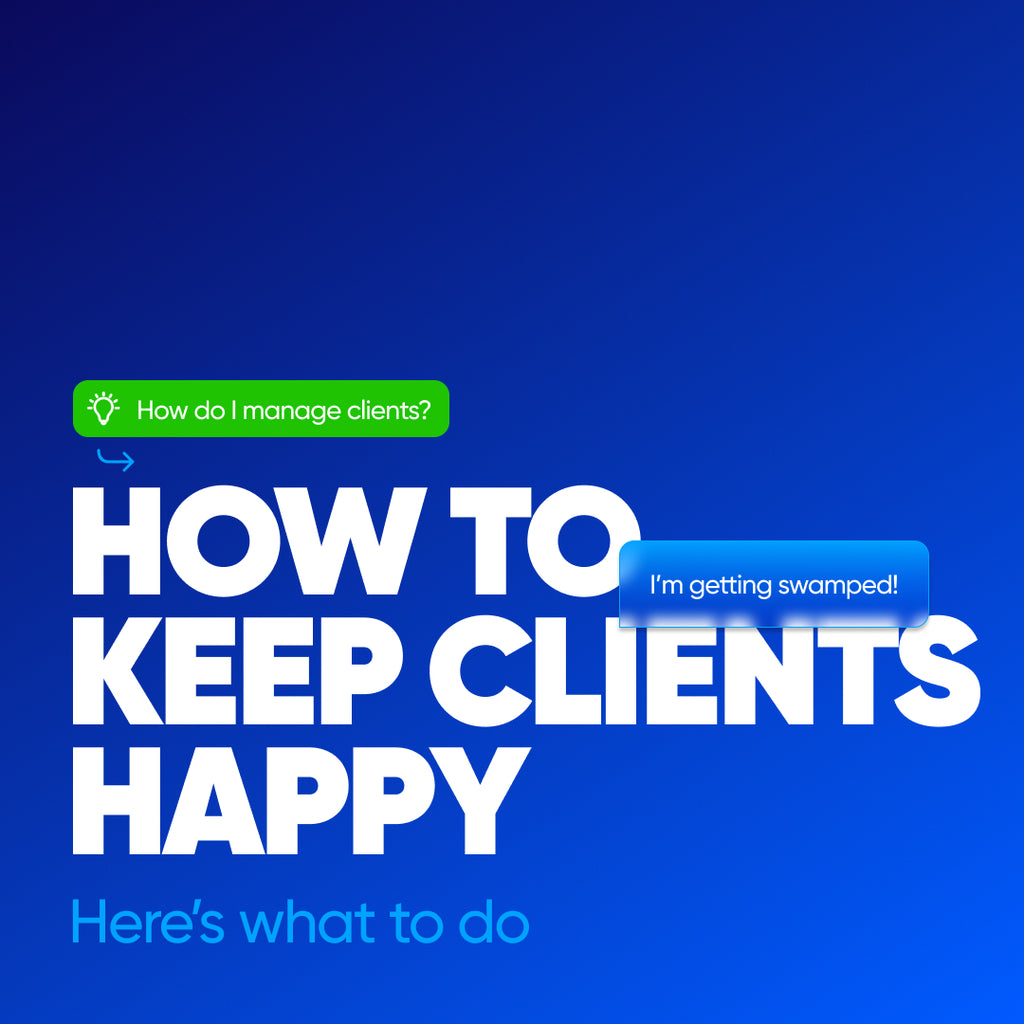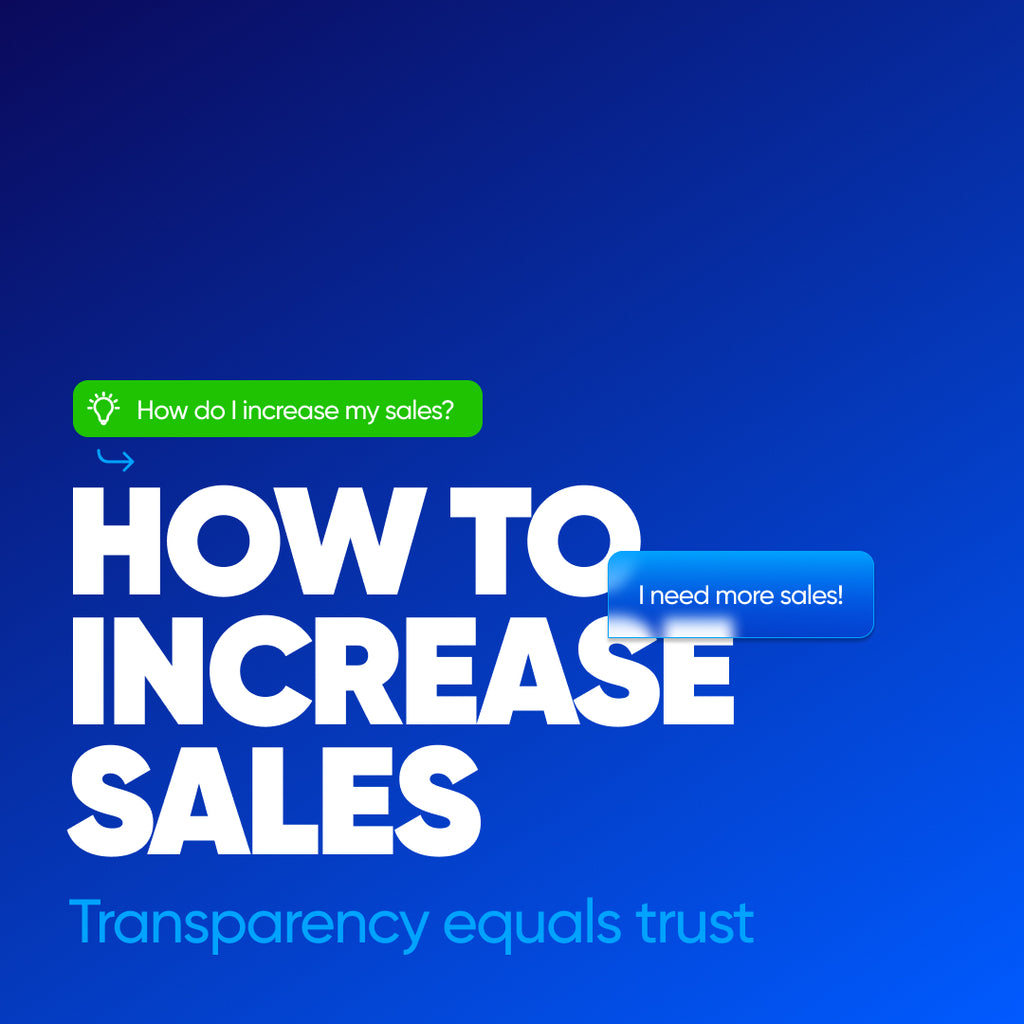In 2017, I was featured on the CBC Network's hit TV Show The Dragons' Den, where I sold my direct-to-consumer dog toy business, Dawg Grillz. I used a combination of social selling, referral marketing and user-generated content to build customer loyalty, which resulted in one of the most successful DTC e-commerce brands.
In this multi-part series, I will dive into how I did it, step-by-step, so you can follow on to a successful consumer packaged goods brand.
There are many ways to build a successful direct-to-consumer brand using various marketing strategies, but the core steps remain generally the same. You don't need to reinvent your business model wheel to succeed.
Steps to creating a direct-to-consumer brand:
-
Idea
-
Personality
-
Customers
-
Brand
-
Products
-
Sales
-
Channels
-
eCommerce
-
Logistics
-
Marketing
Your DTC strategy can tackle each piece on this list in slightly different orders, but I've found this way works best as your marketing efforts and direct sales strategies will have a greater chance of success without the need to invest heavily in terms of capital.
Whether you're an online store or a department store, your market share will increase, and your overhead costs will decrease if you follow the best practices I have tested over the past two decades.
Let's get some common direct-to-consumer questions out of the way first.
Scroll to skip-to-here if you want to dive right in, but for some people this is important.
How much does it cost to start a DTC brand?
I took Dawg Grillz from the initial idea phase to an inventory of 5,000 products and my first sale on the eCommerce site within about $40,000. I had this money from the profit of selling my first house, but it's not an all-at-once expenditure. You can realistically break this up into $2,000-$6,000 steps without much in terms of delays. Some pieces, like mold production, do cost more, whereas other steps, like writing a social post, are "free," with the only expenditure being your time if you're a DIY'er.
The great part of direct-to-consumer brands is that you're often online retailers and managing your logistics. This removes the cost of brick-and-mortar physical stores, third-party retailers, and supply chain concerns, and your business-to-consumer strategy does everything from the idea to leveraging customer data to build legacy brands.
What is a DTC brand?
A direct-to-consumer brand is one where the business sells directly to the end user without focusing on retail stores or a retail middleman. Virtually all companies (even giants like Apple) have direct-to-consumer aspects to their retail business models. For example, my customer journey with Apple is almost entirely DTC, where I go to their eCommerce site or Shop App, purchase the products at full retail price, and Apple ships the product.
From a more common perspective, direct-to-consumer brands are often owner-operated and rely on the business owner to design, package, and fulfill orders. The benefit of the DTC model is the lack of retail partners, which can take huge bites out of profit. If you're just getting started with digitally native brands, you're most likely going to start as a direct-to-consumer brand. The reason is that you will most likely not have the profit per unit to share enough profit with your distribution and wholesale channels to remain profitable. You'll most likely be starting in the thousands of inventory units versus the millions needed to profit at scale.
Skip-to-here!
Step 1: The Idea
Having a great idea, which the industry likes to call this market fit, is critical to getting the direct-to-consumer ball rolling.
I'll start with an example. My Dawg Grillz dog toy brand idea came from a few places:
-
I love dogs = Built in motivation
-
Market products were boring = No innovation
-
Products aren't dangerous = No liability, easy to insure
One of the simplest ways to develop your idea is to start with the "there must be a better way" line of thinking. You will be much better off if you can align that "better way" with a direct-to-consumer idea in an industry that aligns with your interests and experience. I've been, and I've seen, more success and happiness when customers can align their ideas, markets, and interests than when the idea is profit-based.
Don't get me wrong, profit is important, but going into 2024, people building consumer packaged goods brands want more than profit. They want their business to be enjoyable and support their life goals. Trust me when I say this: if you have a product that you can wake up to 50-100 orders, fulfill them in the first couple hours of the day, and enjoy the rest of the day on your terms, you're much more likely to be happy than if you're selling thousands per day chained to a warehouse chair.
Each person has their own goals, but in this article, I'm mainly talking to the folks looking for that $100,000-250,000 bump in salary versus people trying to be the next big thing and make billions.
Overanalyzing and researching your target audience before build ANY audience is the wrong way of going about it. As you build your idea, think less about making the product fit a particular market, but instead focus on building the market, then building the product they want.
How did I come up with my idea?
Going back to my original formula, I saw a market because virtually all dog products focused on the dog instead of the dog's owner. I wanted a toy that evoked a reaction from others and was something people wanted to share on social media. I also wanted a product that was easy to produce and wasn't such a disrupter that I had to reinvent the market. I had $40,000 to get this done, not $4 million.
The idea was simple: Dawg Grillz is a ball, REVOLUTIONARY, I know! But the difference was I put different styles of teeth on them, from Cartoon teeth to Zombie teeth to Gold Grillz style teeth. It made the dog look hilarious, and people snapped and shared pictures online. User-generated content was incredibly easy to find, and some videos went viral, with one video getting over 20 million views.
Step 2: Personality
You might find it strange that I didn't jump straight into product design; I started by becoming a media channel for everything dog-related.
The reason is simple, and I stole it. Kim Kardashian, and every other influencer, knows this. You can quickly build successful DTC eCommerce brands if you have an audience. Don't worry; you don't need millions of followers to start selling. Suppose you consider an average eCommerce conversion rate of 4%, even with a few hundred followers. In that case, you can start getting your first pre-orders and building your community through your favorite channels.
If you want to watch an excellent documentary on how a famous personality can build multiple brands simultaneously, look at the "Welcome to Wrexham" documentary. This documentary follows Ryan Reynolds and Rob Mcelhenny as they purchase Wrexham football club in Wales. They bring massive resources and a loyal fan base, which gives them enormous reach and can generate a fan base out of thin air.
Tons of work goes in on the celebrity influencers' behalf to make these brands successful, but their reach certainly does help.
Step 3: Customers
The key to any business is customers; a terrible product with loads of customers will succeed, whereas a great product with no customers will fail.
Early in the process, I used customer experiences and learned that when I involved customers in the product testing phase, I could iterate faster and get feedback on features clients wanted to see that I may have overlooked. One key point was asking customers what the "must-haves" were when choosing dog toys.
The toy's smell and ability to float and squeak were incredibly important to the customer. The problem is that you will have to sort through many opinions, many of which can be contradictory, and implement the best combination of features.
For instance, almost every customer wanted the product to squeak AND be indestructible; that's a contradiction because to squeak, the product has to have air, a whistle, and be flexible. Dogs are built to chew through bone, and you can't do both. Dogs also love squeaky toys because they trigger their hunting response, so they furiously go at toys with a squeaker and destroy them.
Bringing customers into the product development process allows them to feel invested in your brand, increasing brand loyalty, and loyal customers buy your products over and over, increasing lifetime value end consumers.
Always remember that as you go to build in public. DTC and other brands can benefit significantly by including the customer in research and development.
Step 4: Brand
Customers love brands that make them feel special. It is why customers walk around with Louis Vuitton bags with the LV plastered over every square inch.
Although comparing the brand loyalty of a centuries-old brand recognized worldwide, we often don't have centuries to get these direct-to-consumer brands up and running. Creating a Logo Design that fits the market is the first step to establishing your brand visually. Up until this point your brand has all been content and emotion driven.
There are a few decisions. You will need to make it during the sale of your direct-to-consumer product. Logos are typically designed using a combination of icons and Text. The Icon and Text are both very important, as your Icon will be used at a small scale, such as your Favicon (the small 32 x 32 pixel icon on the internet browser tab) and the icon in the search engine results page (SERP).
If you are thinking of moving to Shopify from another eCommerce platform such as WordPress, I offer complete Shopify Website Migration Services here.
The text is also important as it communicates the name of your brand identity. It's tough to have one without the other. For example, the first version of the Nike Logo had the "Nike" word overlayed on top of the "Swoosh" icon.
Simpler is better for your icon and text in your branding, which should set your Logo Design's foundation.
Brand Identity Design is a little more complex than Logo Design. In Brand Design, we're adding colors, text styles, supporting icons, buttons, mock-ups, and other components that will be used daily to set your brand's style.
Step 5: Products
Surprisingly, we're halfway through the list and only discussing the product now. However, building the community and brand first is essential to a successful direct-to-consumer brand.
As your brand grows, you can launch products without reconsidering the above steps if your product is successful enough to have multiple versions. For example, the Dawg Grillz brand I sold in 2017 uses the same 3rd generation product I originally designed almost 10 years ago.
Once you achieve a great product and product-market fit, you don't have to keep redesigning the product over and over unless your goals are to innovate and grow continually. Often, having a well-designed, timeless product is better than putting yourself under the stress of innovating with new products each season.
There is nothing wrong with building a great product that stands the test of time and doesn't require constant updates. Typically, you don't need a brand-new product when selling thousands of products, as you will always have new markets to access. You will only need to continually innovate if you have reached market saturation or are trying to get more sales from the same customers.
If you use Apple as an example, a product rarely looks wildly different than any product that preceded it. Take, for example, the Apple iPhone; I can't tell a huge difference between an iPhone 12 Pro Max and an iPhone 15 Pro Max; even though they are years different, they generally look and function the same outside of the available colors.
The prototype didn't make it to retail with my Dawg Grillz brand because the rubber mix was too fragile and didn't float or squeak. The second version smelled great, squeaked, swam, and was a hit, but it had screen-printed teeth, which came off too quickly. The 3rd version, which has now sold hundreds of thousands of units, replaced the weak screen printing with physical rubber teeth and lasted very well under heavy use—making it a product that lasted almost 10 years, but simply following customer feedback.
Step 6: Sales
Sales strategies come in two major flavors, inbound, where clients come to you, and outbound, where you find clients.
Direct-to-consumer selling strategies for eCommerce companies rely on making the customer acquisition cost for online shops as efficient as possible.
How do you get sales for your direct-to-consumer brand?
Inbound Sales
When you are selling directly to your customers, your sales strategy has to be as efficient as possible, as you'll be wearing a lot of hats, and developing customer relationships can be time-consuming. Analyzing customer preferences and improving customer retention is much easier than you think.
The first sales strategies you want to implement are inbound sales strategies. Inbound sales happen when the customer comes to you, purchases, and leaves. The customer acquisition cost is near zero, and you want to focus on this first, as it often takes the longest to develop. Inbound sales happen when you create enough content that you're appearing first on social media channels and search engine results pages.
Developing the quantity of content needed for sustainable sales for your direct-to-consumer brand is high. For actual numbers, I recommend writing at least 300 pages of content on your website and at least 200 social media posts, which can be spread over numerous channels and then remixed 2-3 times per year.
Although helpful, you don't necessarily need thousands of pieces of content each year. 200 social media posts are enough to give you the necessary content to produce organic sales.
Your mission, should you accept it, is to create 300 pages of content on your website and 200 pieces of social media content before considering paying for ads.
Outbound Sales
The outbound sales strategies are faster to deploy but often eat a lot of profit. Within 24 hours, you can have Google Display Ads or Facebook Ads delivering traffic to your site, albeit for a hefty price tag. Paid advertising has never been more expensive, with some DTC brands reporting >$100 customer acquisition costs.
If you're selling a $1,000 product, a $100 customer acquisition cost might seem high, but when averaged out, most DTC brands have average order values in the $50 range, with lower costs meaning that most customers will never be profitable. You may only begin to see a return after 5-6 transactions.
However, there's a big dopamine hit once your ads start converting (even if there is a negative ROI) due to the simple psychology behind likes, shares, and comments. Marketers often report only on engagement and not on profit.
It's easier to celebrate 10,000 paid-for likes than $100 profit. Don't be fooled!
I always suggest optimizing your inbound sales strategies before your outbound paid strategies.
Step 7: Channels
Omni-channel marketing is important to any direct-to-consumer marketing strategy, and DTC sales come from a wide range of sources.
The primary consideration is to understand the volume of work you can handle. While it's easy to list out all of the channels you want to use, please remember that when I started Dawg Grillz, it was on Shopify and Instagram only. The business was profitable on only 2 channels, and more channels don't always equal more sales. You may feel overwhelmed by needing to produce content on numerous channels, as each channel has unique formats and content requirements, which can quickly overwhelm the marketing department (you).
What are the best channels for your direct-to-consumer brand?
eCommerce Channels:
-
Amazon
Social Channels:
-
YouTube
-
Instagram
-
Facebook
-
Tik Tok
Service Channels:
-
Live Chat
-
Social Shopping
-
Email Newsletter
Passive Channels:
-
Adwords
-
Affiliates
-
Digital Products
The above list is all you need to have a phenomenal business regarding these channels. As you go, you will need to balance which ones you like using versus which you're good at. If you don't "like" TikTok, YouTube is a great alternative. Even in 2024, you can build a sustainable DTC business on Instagram only; diversification is the only issue with single-platform businesses. It can become dangerous if you rely on one channel for your sales strategy. As you begin to grow each channel, a better marketing strategy is to start porting existing content over to the next platform.
Step 8: eCommerce
Ensuring that your direct-to-consumer brand is firmly rooted in eCommerce is critical to your success.
Your Shopify site should always be your primary source of sales as it will always be the most profitable. Even with brands in the 5-6-figure range monthly, the Basic Shopify plan is more than enough. Amazon is another massive channel that accounts for 50% of eCommerce spending. However, the Amazon platform has massive costs and risks that most people don't realize.
It costs basically nothing to store 1,000 products in your office, ready to be shipped. Still, most brands sell that same amount of units on Amazon has a cost per sale commission and a membership cost, and if God-forbid your product doesn't sell quickly, Amazon can and will add a heavy stocking fee, which some DTC brands never get out from underneath.
Even with the risk, I recommend Fulfilled By Amazon (FBA), as it takes the logistics off your plate. FBA is an excellent idea once you have over 200 orders per day, as at this level, it becomes difficult for an owner/operator to keep up with your sales.
One strategy I have been implementing recently on client sites is adding a Buy on Amazon button near the Add to Cart if the customer wants to use their Amazon Prime account. This can have a negative impact on the eCommerce site conversion rate but can improve the overall conversion rate, which is much more important from my perspective.
Step 9: Logistics
Fulfilling orders is getting more and more simple with tools from Shopify.
I chose Shopify for my website, and it's the best platform. You can be up and running within a couple of days. The key here is understanding that your website will never be "done." Websites are evolving pieces of communication. The fact remains that you need one to be successful. It's just too big of a headache to try to run your customer relationships management system through social media only.
With a great Shopify Website, you'll give yourself a leg-up when fulfilling orders, as it can be connected to your favorite logistics company, from your local post office to major shippers like FedEx and UPS. You can print orders from your Orders page and stick shipping labels to your packages.
Hardware tools such as a Dymo Label printer make your life so much easier to pack, print the label, and ship the orders to your clients. By increasing efficiency across your online business from a logistics perspective you will be able to give customers the same Amazon quality same day delivery, instead of having a system that requires you to be reactive instead of proactive. Inventory management and order fulfillment increases the online shopping experience for customers dramatically, and will help you increase market share.
Step 10: Marketing
Marketing your brand is incredibly important, and rounds out the guide as this final step allows you to scale.
When you're starting marketing strategies, it's important to have a few pieces of marketing communication so that you start building each of the marketing channels explained in the Channels Step above.
Developing a great customer relationship on a personal level ensures that your eCommerce store will have the best chance at enhancing its brand reputation.
Whether you are a mattress company or the dollar shave club, once you have complete control over the above steps you will be in a great position to scale and start enhancing the customer experience and leave ahead of other DTC businesses.
Becoming one of the most well-known brands requires marketing. Up until this point, you have been building your brand manually, but marketing is what makes your direct-to-consumer brand scale.

How to Build a Direct To Consumer Brand (DTC/D2C)
Then, pick one of these:

Unlimited Graphic Design

Unlimited Copywriting

Unlimited Web Development
Third, try these:

Start a FREE Shopify Site!

Start Ranking On Google





